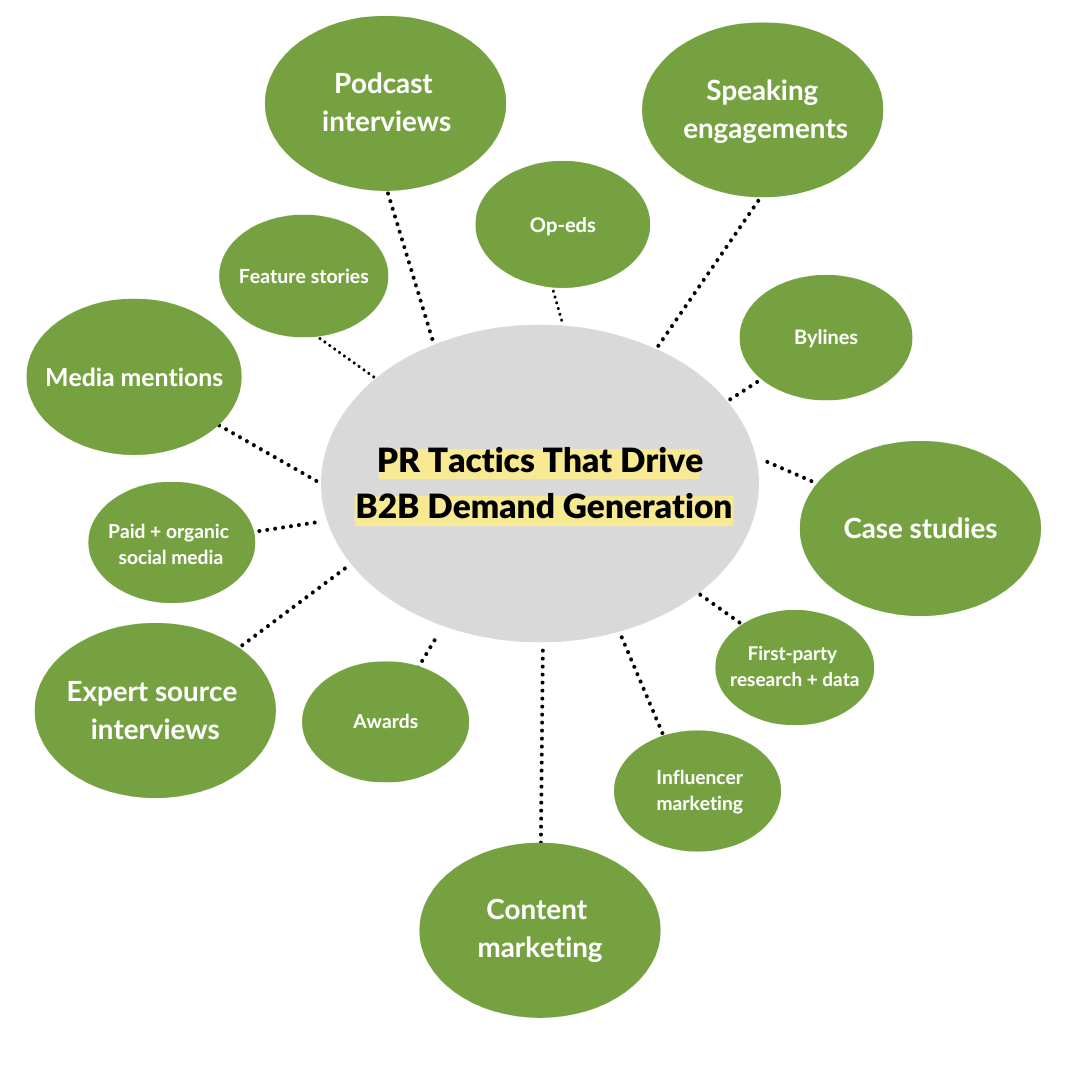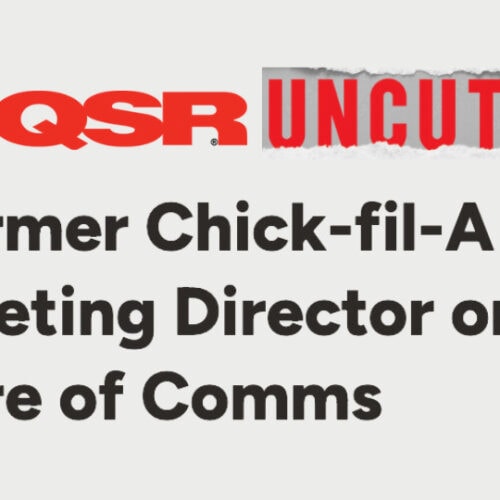Remember, PR is a key part of B2B demand generation
B2B demand generation, or demand gen, is all about creating buzz, awareness and recognition for your company’s product or service. It has risen in popularity as a discipline because results consistently show that demand-gen strategies deliver more qualified leads, higher conversion rates, shorter sales cycles and more right-fit customers.
To generate demand, you must bolster awareness, drive differentiation and influence product consideration. One of the best tools in your arsenal to do all of the above? Public relations (PR).
What is demand generation?
Demand gen is an area of marketing that employs multiple tactics to generate interest in a company’s product or service and, ultimately, drive future sales opportunities. What makes B2B demand generation different from other acquisition strategies is a commitment to long-term customer relationships, not quick-turn or high-volume leads.
Creating demand includes marketing to people who aren’t actively buying. If you wait until they’re in “buy mode”, you’ve already lost. By then, if they haven’t heard of you, you’re unlikely to make their shortlist for consideration.
How does PR fuel B2B demand generation?
When it comes to mastering B2B demand generation, PR should be a go-to strategy because it elevates both your company’s credibility and visibility.
PR gets your company talked about by third parties, which boosts your brand’s reputation. Articles, news features, influencer endorsements and expert opinions in industry publications or events—all of these channels become avenues for PR to secure more demand.
When a potential customer is made aware of your offering through trusted sources and then sees you repeatedly referred to as an expert in your field, they’re more likely to turn to you as the solution to their problem.
Notably, strong PR can also create demand for a solution that the buyer didn’t even know they needed. Educating a customer about an emerging problem or trend and then arming them with insights or examples on how to solve it is a key strategy for newsworthy content.
To summarize, PR fuels demand generation by elevating your company’s:
- Visibility – Make your name familiar to your target audience by maintaining a constant presence in news and trade media and regularly sharing company updates and product announcements.
- Credibility – When you possess a unique perspective, substantiated by evidence, and establish yourself as the go-to authority, potential customers will gravitate towards you.
- Influence – When your product or brand is positively recognized, endorsed or mentioned by reliable and known sources in your field, consumers are more likely to find, trust + consider it.

Measuring PR’s impact on B2B demand generation
The biggest barrier to PR and demand gen integration is measurement. Or more specifically – the misconception that it isn’t possible to correlate meaningful PR efforts to demand creation.
Measuring PR efforts against B2B demand generation is absolutely possible, it just requires some cross-departmental collaboration and tracking the right metrics.
Consider the following ways that Belle helps clients track rising demand:
Share of Voice: Compare your media presence to competitors. Track your overall appearances, whether classified as press releases, mentions, features or source interviews. A positive sign for demand generation is an increase in your media presence compared to competitors, particularly in source interviews.
Sentiment Analysis: Evaluate whether media coverage is positive, neutral or negative and whether it aligns with desired topics. A growing number of mentions unrelated to your core subjects won’t stimulate demand. Assess PR’s impact qualitatively to gauge its true influence.
Referral Traffic: Examine whether media placements direct visitors to your website. While it’s not always possible to include website links in news stories, you can typically incorporate URLs in contributed articles. Use UTM tags to most accurately track referral sources in Google Analytics. A surge in website visits suggests heightened demand.
Website Traffic: Observe spikes in website visitors following new placements or speaking engagements. This may encompass referrals, branded searches, employee-specific queries or direct traffic. Increased website visits indicate growing demand, especially in the 30 days immediately following coverage or an event.
Content Engagement: Monitor clicks and shares when amplifying news coverage through social media, newsletters, advertisements or personal emails. High engagement on PR victories indicates audience interest and demand stimulation, even if they don’t visit your site.
Leads: While the primary goal of demand generation isn’t immediate sales, it can lead to such outcomes. Include a field on your “Contact Us” form or collaborate with the sales team to trace lead sources. In our experience, credibility-building tactics like speaking engagements and podcast appearances are most likely to generate enough demand for direct leads. Listeners are poised to solve specific problems, making them receptive to your solutions.
PR is essential to B2B demand generation
A savvy public relations strategy empowers brands to create buzz, instill trust, and captivate target audiences. It’s undeniable—strong public relations is the engine that drives B2B demand generation.
Furthermore, PR becomes even more potent when seamlessly integrated with other marketing endeavors. Amplify your award wins, news coverage and thought leadership across your owned channels and through paid advertising to capture and ultimately convert demand.
Fill out the form below to be notified when our Think BIG blog publishes each month.




